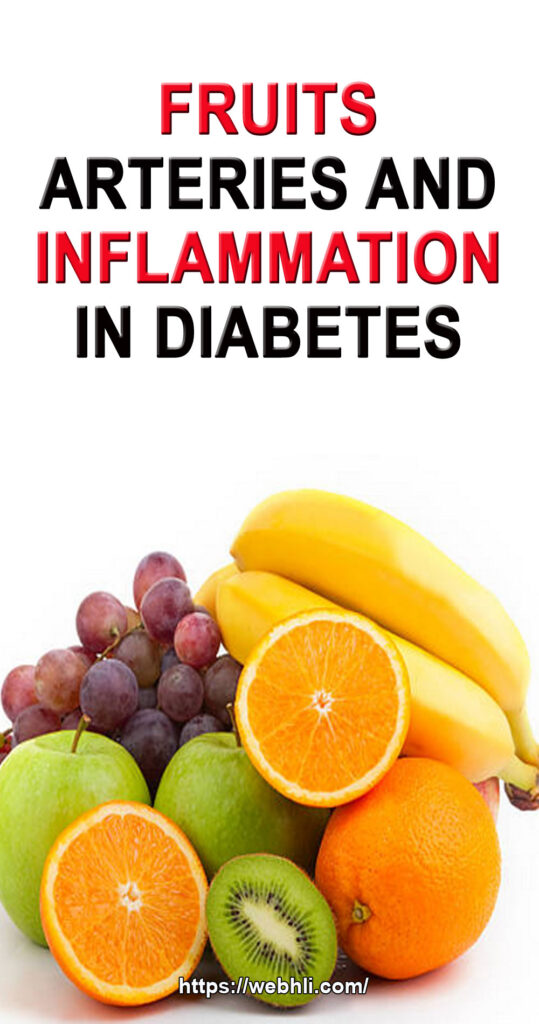
A vegan diet in general is often said to be the best kind of eating plan for people diagnosed with Type 2 diabetes, but the possible benefits of eating fruit are still largely unexplored.
Since Type 2 diabetics are at risk for blood vessel disease leading to heart attacks and strokes, investigators looked at how eating fruit might affect the blood vessels of diabetics. Their results of one investigation were published in the Journal of the American Dietetic Association, in October 2011.
Check out these related articles, too:
How Resistance Training Can Help You Heal Diabetes
Diabetic Breakfast Meal Planning, Truth Revealed!
Weight Loss and Blood Sugar Control
Arthritis And Diabetes - A Double Whammy
What Is Diabetic Gastroparesis?
Healthy Lifestyle Tips For Type 2 Diabetes
Does protein increase blood glucose levels?
How Does Diabetes Affect My Teeth and Gums?
This particular study involved four hundred and seven volunteers diagnosed with Type 2 diabetes. It was found those who ate the most fruit over a 3 day period had:
- the most space for blood to flow inside their carotid arteries, and
- had the lowest blood levels of c-reactive protein.
The carotid arteries are found on each side of the neck and carry blood to the brain. A blockage in either carotid artery can cause a stroke. C-reactive protein is associated with inflammation, diabetes, heart attacks, strokes, and disease of the blood vessels in the hands and feet.
The investigators concluded that fruits could be an important part of nutritional therapy for people with Type 2 diabetes.
How fruits could be helpful for reducing inflammation and keeping arteries open is an ideal subject for further research. In the mean time, a diet rich in a variety of fruits is bound to be healthful. Many fruits are sources of vitamins A, B1, B2, B6, C, E, and K, as well as folate, niacin, and pantothenic acid. They can also contain minerals such as potassium, phosphorus, magnesium, calcium, sodium, iron, selenium, manganese, copper, and zinc. Fruit also supplies hundreds of phytochemicals, plant molecules that include antioxidants. Antioxidants protect cells from damage caused by oxidation reactions.
When selecting fruit, get the freshest ones possible, so they will not have lost vitamins on the way to market. Buying from local growers will not only help to ensure the product is fresh, but will cut down on burning hydrocarbons. The freshest fruit of all is the one you eat right off the tree, so consider a kitchen garden for exercise as well as healthful food.
If you live north of the equator, it is time to plant blueberries, grapes, apples, cherries, pears, peaches and plums. In the southern hemisphere it's time for planting brambles, raspberries, blackberries, and loganberries. Check with your local nursery for species of plants that do well in your area. Sometimes plants not known for growing in your area will have hybrid cousins specially bred for your climate.
Check out these related articles, too:
Good Energy Food for Diabetics
10 Simple Food Concepts Every Person Living With Diabetes Should Know
Making Cheesecake For Diabetics
Enjoy the Taste and Benefits of Diabetic Foods
Will The Mulberry Leaf Help Your Diabetes?
5 DIABETIC FRIENDLY SALADS Some Tasty
DIABETIC LEMON COCONUT COOKIES Some Tasty
To discover answers to questions you may be asking yourself about Type 2 Diabetes, click on this link... Natural Diabetes Treatments
Clicking on this link will help you to learn more about Type 2 Diabetes Solutions... Beverleigh Piepers RN... the Diabetes Detective.
Article Source: http://EzineArticles.com/6745354

 Protected by Patchstack
Protected by Patchstack